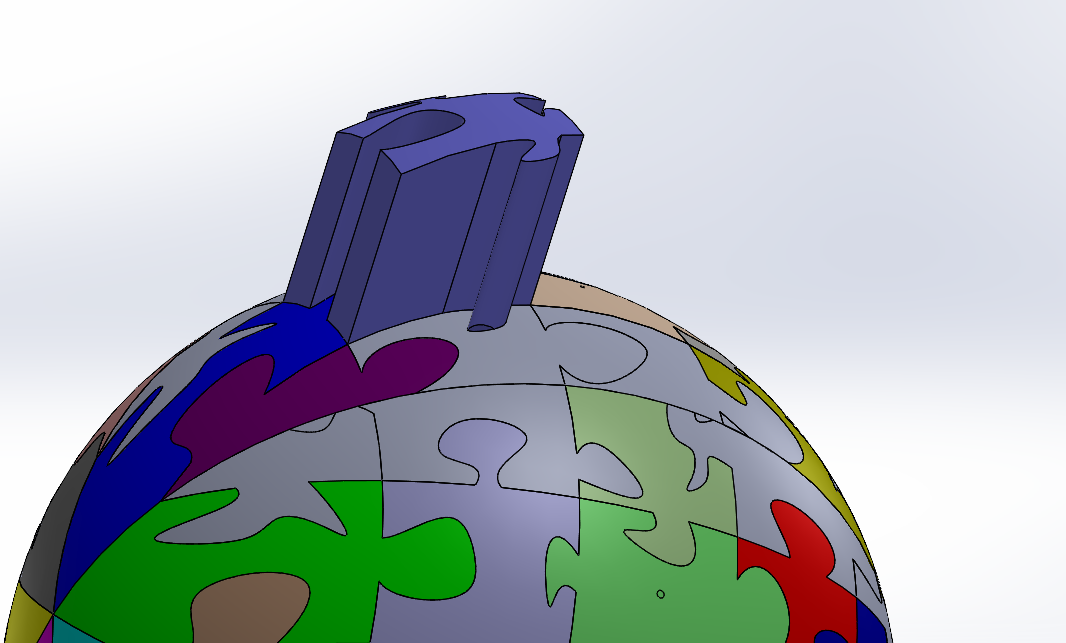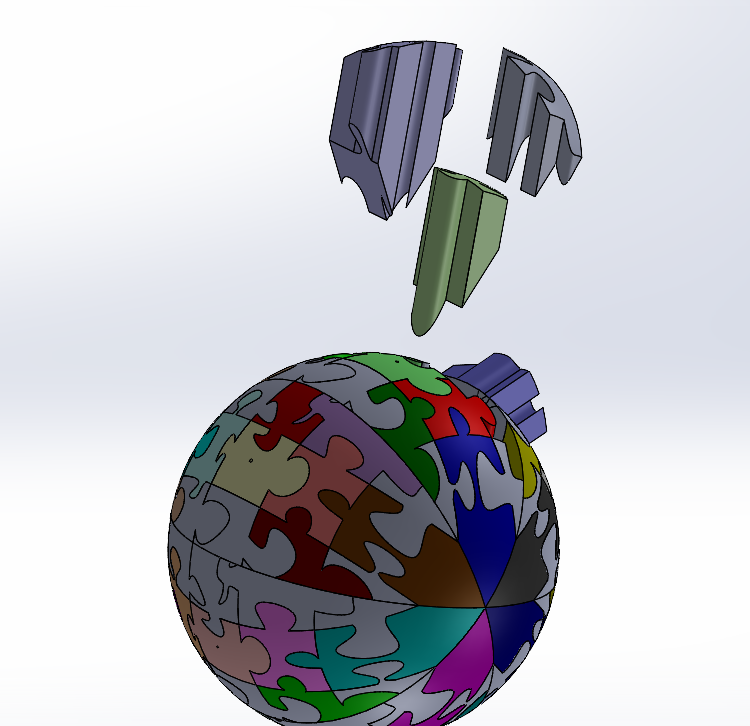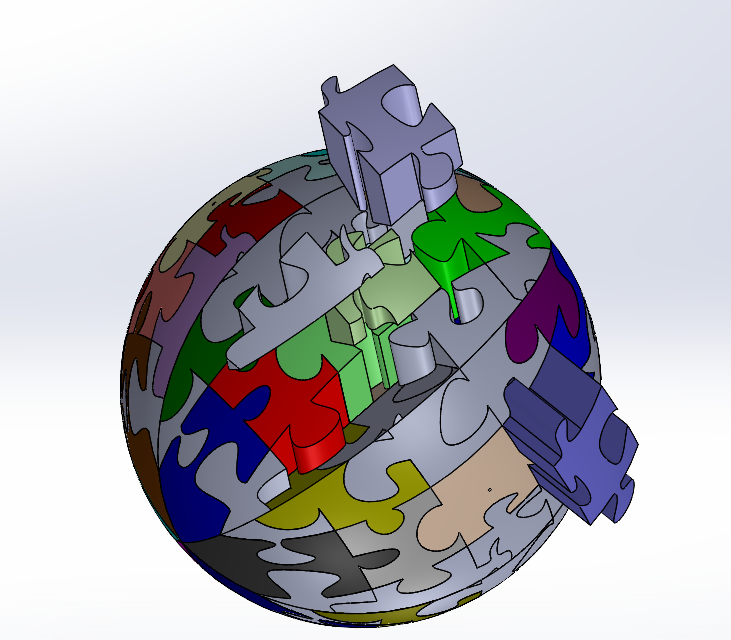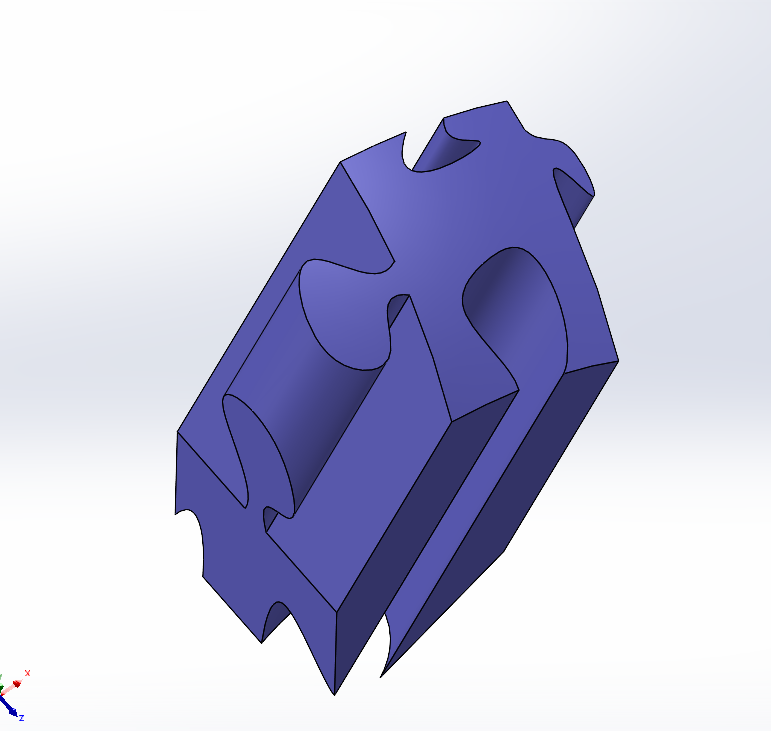Hello everyone,
I'd like to make a puzzle sphere (a bit like the Wikipedia logo). For the sphere it's okay but it's for the puzzle side where I get stuck. Do you know how I can do it?
Thank you
Hello;
Here are some ways to work...
https://forum.mycad.visiativ.com/t/repetition-dun-decor-sur-une-face-cylindrique/112757
Otherwise, it is possible to use the " Wind " tool if the Puzzle does not have to go all the way around the sphere
https://help.solidworks.com/2024/French/SolidWorks/sldworks/HIDD_DVE_SURF_WRAPPING_SKETCH.htm?verRedirect=1.
Personally, I will be more in favor of a removal of material according to a trajectory (3D) for a cleaner and more professional rendering...
It all depends on the purpose.
I'll try but yes we would like the whole puzzle
Hello
Are all the pieces of the same latitude the same?
Is the purpose of the puzzle to have independent pieces (different bodies) to create a printable 3d puzzle, for example, or just a surface rendering (engraving)?
No, you can't have an identical piece on the same latitude because they have to fit into each other. The idea is to be able to print it yes
I meant each identical " pair ":
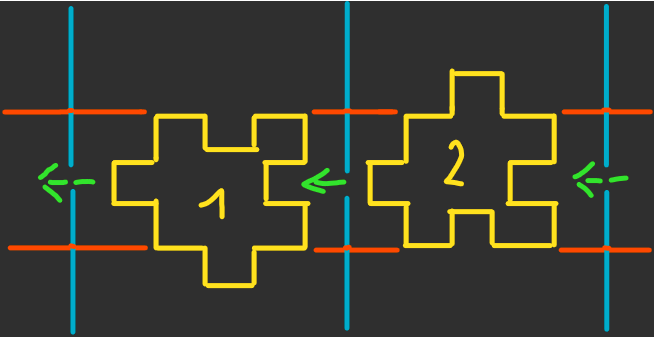
If this pair of pieces does not repeat all the round, we can forget about the repetitions.
If each piece of the puzzle is unique, you have to create the entire pattern (except the pole pieces) to be wound/projected.
Not sure that Solidworks is the ideal software for this, good luck in any case!
I confirm ![]() but I hold on
but I hold on
Yet SW has always been a master in the art of confronting us with puzzles.
As we are on a sphere, no pattern is possible (because the number of pieces decreases as we move away from the equator).
As we don't have the same number of pieces depending on the rows, the hooks between rows must be quite folkloric to manage (probably pieces with a different number of hooks between top and bottom).
Normally the pieces are all made flat → the full 3D is a disco ball and not a sphere.
Frankly, I don't see how to automate this mess.
And the part-by-piece design must also be quite difficult because of the constraints explained above.
When you see the mess at the poles of a commercial puzzle (Ravensburger 12339) made with curved (and therefore not flat) pieces, I wish you good luck:
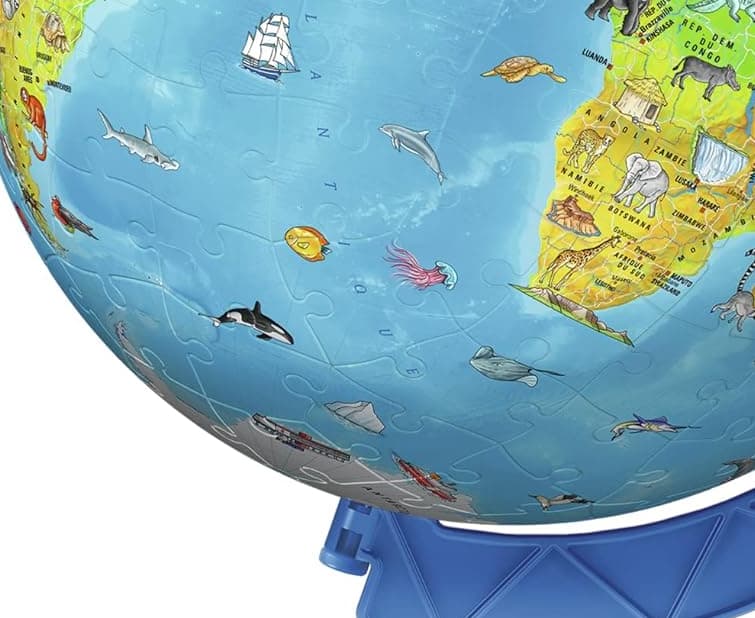
Hello, c’est très jouable ![]()
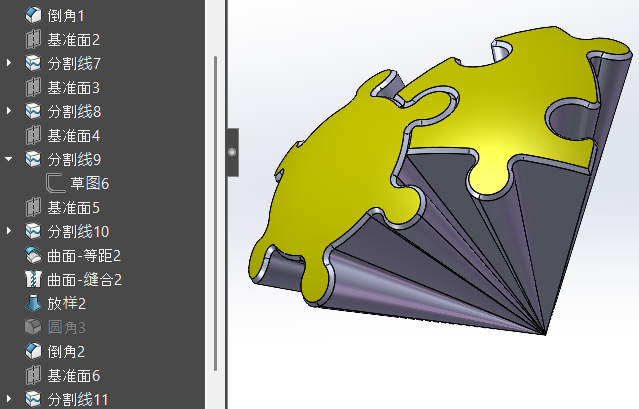
il y en a d’autres sur grabcad ![]()
Bon courage !!
Hello. It's possible, but I was counting more on a reduction in the size of the pieces as I approached the poles than on their number. The " spherification " distorts the pattern, exactly as a Latitudes-Meridian grid does. This is the method used for the Wikipedia logo mentioned by @Mélodie_BAZINVAL .
Obviously, if you want to have all the pieces of the same size, it complicates things. And still, technically nothing prevents you from making pieces " stretched " on the pattern so that they are reduced to " spherification ".
And when I said " except the poles ", I mean to wind the pattern without going all the way to the vertices of the sphere, so that the " voids " remaining at the poles naturally form the shape of these pieces according to the shape of the coiled pieces of the pattern. Let the part of the pole illustrated by @Scofield be deduced from the other pieces.
A Chinese ![]() CQFD puzzle
CQFD puzzle
it's not wrong ![]()
![]() , by breaking down the feature manager we understand anyway, it's the part of the poles the basic part
, by breaking down the feature manager we understand anyway, it's the part of the poles the basic part ![]()
And why not make a plane projection of the surface of the sphere? It is then easier to repeat the pieces and after that everything should be rolled up again with the deformations that go well.
I'm a new user on SW after a long time under Creo but that's how I used to make textures on the left (example of a handle with fingerprints) and I saw on SW that the flattening function existed.
Hello, indeed you can put a sphere flat with the flat surface tool (available only on premium), but from there to succeed in making puzzle pieces, I haven't tried because I find the previous methods relevant.
flat test, a little less clean than if we go through quarters:
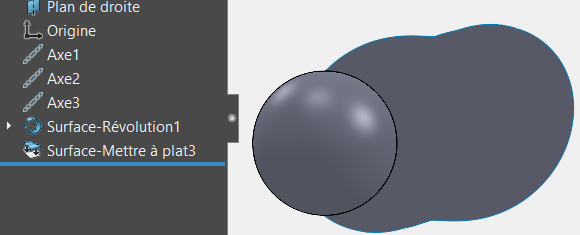
I tried but I couldn't
